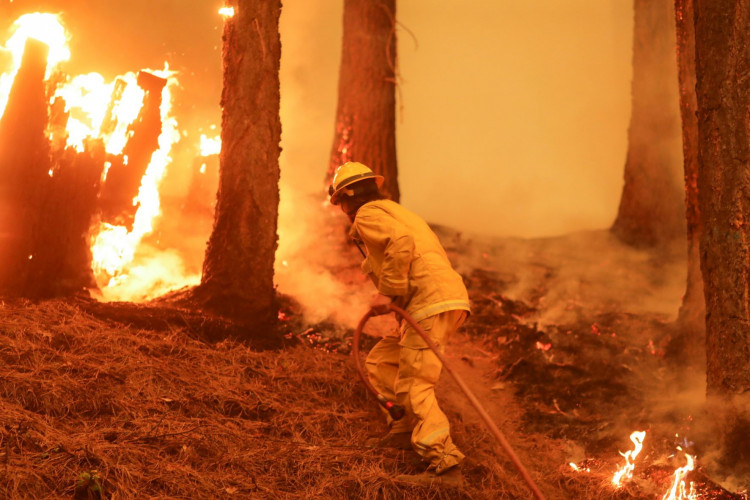Lightning caused a few new small fires in the drought-stricken Southwest on Monday, but the thunderstorms brought much-needed moisture to New Mexico's mammoth wildfire, which has been raging for a month and is now the state's largest in recorded history.
"We haven't seen rain in a really long time so that's exciting," San Miguel County Sheriff Chris Lopez said Monday at a briefing.
"It gave us a little bit of a breather," he added.
Over the last several weeks, wildfires in the American Southwest have destroyed over a hundred homes and small businesses, forced the evacuation of an impoverished mountain region, and are now threatening two ski resorts.
The majority of the damage has occurred in New Mexico, where the combined Calf Canyon and Hermit's Peak fires surged to about 300,000 acres over the weekend, becoming the state's largest fire ever.
A change of winds pushed flames toward the Sipapu ski resort and smoke into the Rio Grande Valley, where the historic town of Taos is located, lowering air quality. Late Sunday, Taos County issued an evacuation order for Sipapu and adjacent settlements.
Meanwhile, the Black Fire broke out late Friday inside the Gila National Forest in southern New Mexico. It has quickly expanded to more than 18,000 acres.
The images in the Southwest are reminiscent of last year's devastating fires in California, Oregon, British Columbia, and elsewhere. Unrelenting winds, drought, and unusually warm temperatures have mostly affected Arizona, New Mexico, and North Texas this year.
More than 500,000 acres have already burnt throughout the three states, with four big infernos raging in the rugged, forested mountains and valleys north of Santa Fe, New Mexico, accounting for 75% of that total.
The combined Calf Canyon and Hermit's Peak fires have forced the evacuation of over 16,000 residences, principally between Las Vegas, New Mexico, and the state's isolated Mora Valley, affecting over 40,000 people.
According to New Mexico Governor Michelle Lujan Grisham, at least 166 structures, including several houses, have burnt thus far. Although no lives were lost in the fire, one fireman was hurt by a falling tree.
In recent weeks, burn bans and fire restrictions have been enacted in towns and counties across New Mexico, with officials warning that any new fires would put further strain on firefighting resources.
According to public records, the Santa Fe National Forest team that started the fire evaluated a weather forecast that anticipated low humidity and winds blowing up to 25 miles per hour on the day the fire started. The agency has stated that it will undertake a thorough internal investigation into the matter.






